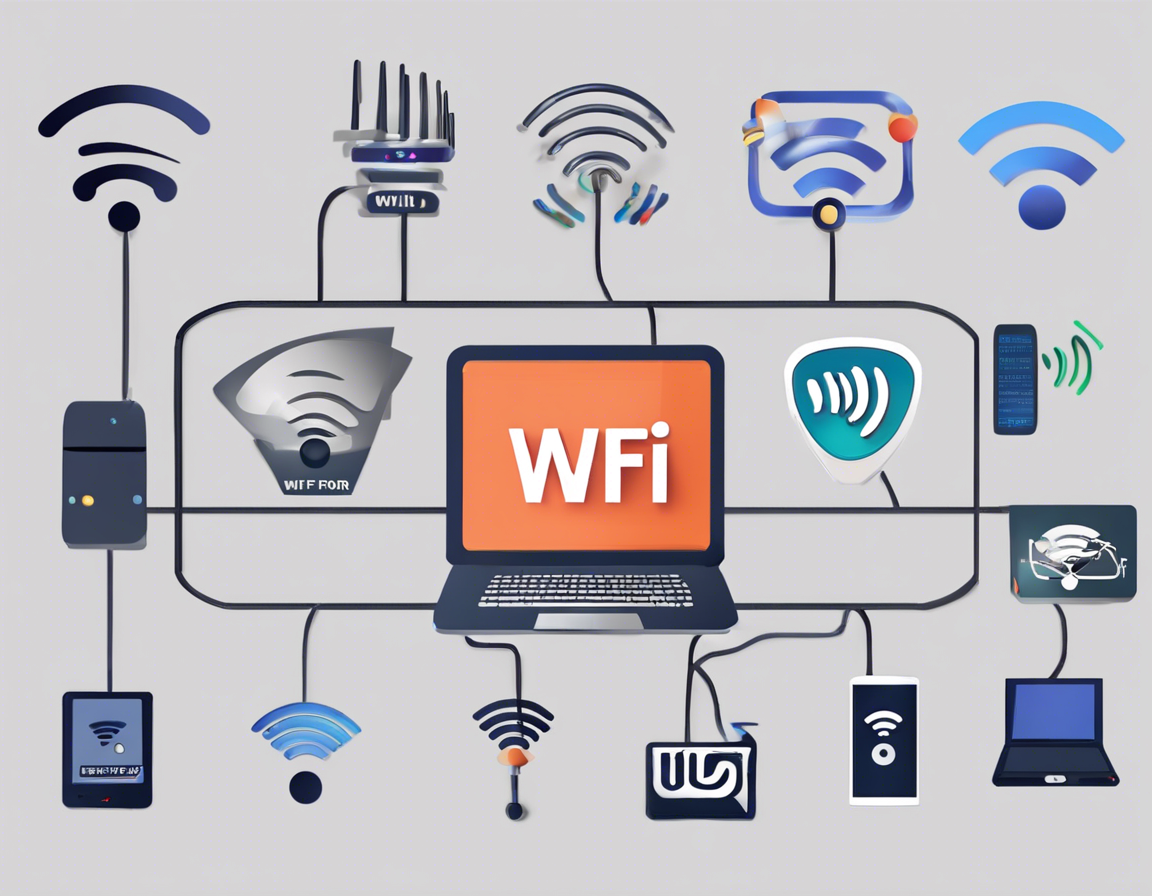What Does ‘WiFi’ Stand For?
Introduction
In this digital age, wireless connectivity plays a crucial role in our day-to-day lives. One of the most commonly used terms in this context is “WiFi.” But have you ever wondered what WiFi actually stands for? In this article, we will explore the origins of this term, its significance, and how it has revolutionized the way we connect to the internet.
What Does ‘WiFi’ Stand For?
Contrary to popular belief, the term ‘WiFi’ does not actually stand for anything specific. It is often mistaken as an abbreviation for “Wireless Fidelity” or “Wireless Fidelity Network,” but these interpretations are not accurate. In fact, WiFi is simply a trademarked term that was adopted as a catchy name for devices that comply with the IEEE 802.11 standards for wireless local area networking.
History of WiFi
The concept of WiFi can be traced back to the 1990s when a consortium of technology companies came together to develop a set of standards for wireless networking. The Institute of Electrical and Electronics Engineers (IEEE) established the 802.11 standards, which laid the foundation for what we now know as WiFi.
How Does WiFi Work?
WiFi technology enables devices to connect to the internet and communicate with each other wirelessly using radio waves. A WiFi network typically consists of a router that acts as a central hub, transmitting data between devices. When a device such as a smartphone or laptop connects to a WiFi network, it establishes a secure communication link with the router, allowing for data transfer and internet access.
Benefits of WiFi
1. Convenience: WiFi eliminates the need for cumbersome cables and allows for seamless connectivity within a specified range.
2. Mobility: With WiFi, users can move around freely while staying connected to the internet, making it ideal for modern lifestyles.
3. Versatility: WiFi supports a wide range of devices, from smartphones and laptops to smart home appliances and IoT devices.
4. Cost-Effective: Setting up a WiFi network is often more cost-effective than laying down physical cables for networking purposes.
Evolution of WiFi
Over the years, WiFi technology has evolved significantly to meet the increasing demands for faster speeds, greater security, and broader coverage. The transition from the early 802.11 standards to the latest WiFi 6 (802.11ax) standard has brought about improvements in efficiency, capacity, and overall performance.
Securing Your WiFi Network
Securing your WiFi network is essential to prevent unauthorized access and protect your data. Here are some tips to enhance the security of your WiFi network:
– Change the default SSID and password: Use a unique network name (SSID) and a strong, complex password to prevent easy access.
– Enable encryption: Use WPA3 (WiFi Protected Access 3) encryption to safeguard your data from eavesdroppers.
– Update firmware: Regularly update the firmware of your router to patch any security vulnerabilities.
– Enable network segmentation: Create a guest network to separate guest devices from your main network, enhancing security.
WiFi vs. Cellular Networks
While WiFi is a popular choice for local wireless connectivity, cellular networks provide broader coverage and connectivity on the go. Each technology has its strengths and limitations, making them suitable for different use cases. WiFi is ideal for high-speed internet access in homes, offices, and public places, while cellular networks excel in providing mobile connectivity outside the WiFi range.
Conclusion
In conclusion, WiFi has become an integral part of our connected world, enabling seamless communication, access to information, and new possibilities for innovation. Understanding the origins and workings of WiFi can help us appreciate its impact on modern society and make informed decisions about utilizing this technology effectively.
FAQs (Frequently Asked Questions)
- Is WiFi the same as the internet?
-
No, WiFi is a technology that allows devices to connect to a local network wirelessly. The internet is a global network of interconnected networks that WiFi can provide access to.
-
Can I use WiFi without an internet connection?
-
Yes, you can use WiFi to connect devices within a local network even without internet access. This is useful for tasks like transferring files or streaming content stored locally.
-
What is the range of a typical WiFi network?
-
The range of a WiFi network can vary depending on factors like the type of router and obstacles in the environment. Generally, WiFi signals can reach up to 100 feet indoors and 300 feet outdoors.
-
What is the difference between 2.4 GHz and 5 GHz WiFi?
-
The main difference is in the frequency and speed. 2.4 GHz offers better range but slower speeds, while 5 GHz provides faster speeds but with shorter range and lower penetration through walls.
-
Can WiFi networks be hacked?
- Yes, WiFi networks can be vulnerable to hacking if not properly secured. It is important to use strong encryption, unique passwords, and keep the firmware updated to mitigate the risk of unauthorized access.
By following best practices for WiFi usage and staying informed about the latest advancements in wireless technology, we can make the most of this invaluable tool for connectivity and communication.
